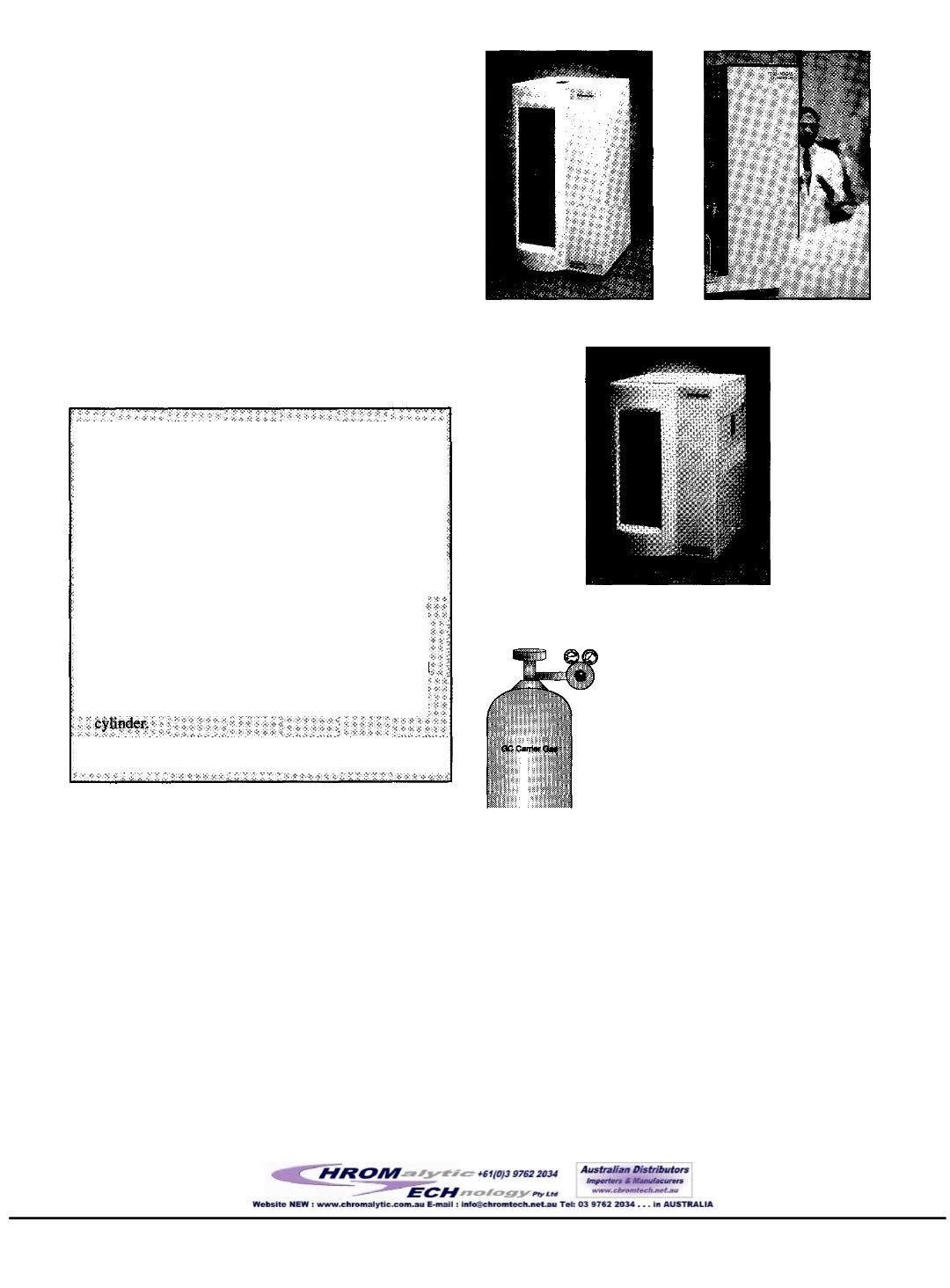
It is common for a newly installed gas cylinder to shut down
unpredictably (within the first 24 hours) if the main valve is
not completely openedwhen it is installed. As the cylinder
pressure decreases, the force against the valve seat decreases,
allowing it to close. Alwaysmake sure cylinder valves are
completely openwhen installing new tanks and completely
closed before removing the regulator.
As a general rule, change a cylinderwhen the pressure
regulator indicates that there is 200-300psi remaining inthe
cylinder. As the cylinder pressure drops, the concentration of
impurities such as moisture and hydrocarbons increase.
Therefore, column damage or premature purifier consumption
will occur if you attempt to “save money” by using all the gas
left in a cylinder. In addition, if the cylinder pressure drops
below the supply pressure required by the GC, retention
times and detector sensitivities can slowly change and affect
the validity of your data.
Hints forProperHandlingofGasCylinders
Observe safe laboratory practice in the
tranportation,
storage,
and usage of gas cylinders under high pressure:
*
Nevermove a cylinder with
a regulator installed.
Make sure safety caps are in place over the gasvalve
when transporting the cyIinder.
9
Always chain or strap cylinders to stationary objects
in the
laboratory and while
in storage
*
Always use cylinder condition labels to showwhether
tank is FULL, IN USE, or EMPTY.
- Always
leave at least 200psi residual gas in
a
depleted
cylinder, Store the empty tank in the storage areawith
the tank valve closed,Mark and date the
empty
l
Do not expose?
cylinders to temperatures above 125°F.
Gas Generators
As an alternative to gas cylinders, many labs use gas genera-
tors. Generators reduce the costs and safety hazards involved
with high pressure gas cylinders. Hydrogen generators supply
hydrogen from the electrolysis ofwater. These units are
convenient, safe to use, and produce very pure hydrogen. Air
compressors can be used for air supply. However, most
compressed air contains hydrocarbons from oil based
lubricants. Compressed air that contains hydrocarbons or
sulfur gases is not recommended for operating an FID, FPD,
TSD, or ELCD. It is advisable to use filters and purifiers to
remove hydrocarbon contamination from the compressed air
source.
HydrogenGenerator:
Nitrogen Generator:
(see
page 23 for cat.%)
(see page 24 for cat.#)
Zero Air Generator: (see
page 24 for cat.#s)
Regulators
The purpose of a pressure regulator is to
maintain constant gas pressure to the
GC. Regulators may be classified as two
types: cylinder regulators and line
regulators. Cylinder regulators attach
directly to the cylinder valve. The
cylinder regulator reduces the gas
pressure from the cylinder pressure
(usually 2500psi for a new cylinder)
down to amore usable pressure (around
100psi for gas chromatography). Cylinder regulators have
two pressure gauges: an inlet, or high pressure gaugewhich
reads the cylinder pressure; and a delivery, or outlet pressure
gauge. This final delivery pressure is user adjustable by
turning the large knob on the front of the regulator.
Cylinder regulatorsmay be either single-stage or two-stage
regulators. Two-stage regulators actually employ two
regulators back-to-back in one housing. The first stage
reduces the cylinder pressure to 200-600psi, while the second
stage performs the final pressure reduction. Two- stage
regulators are less prone to “creep” (a slow increase in
delivery pressure as the tank empties) but have a lower flow
capacity than single-stage regulators. Althoughmore expen-
sive, two-stage regulators should be usedwhen a very
constant delivery pressure is required, such aswhen control-
ling gas flows for a gas chromatograph.
5
5
1998


